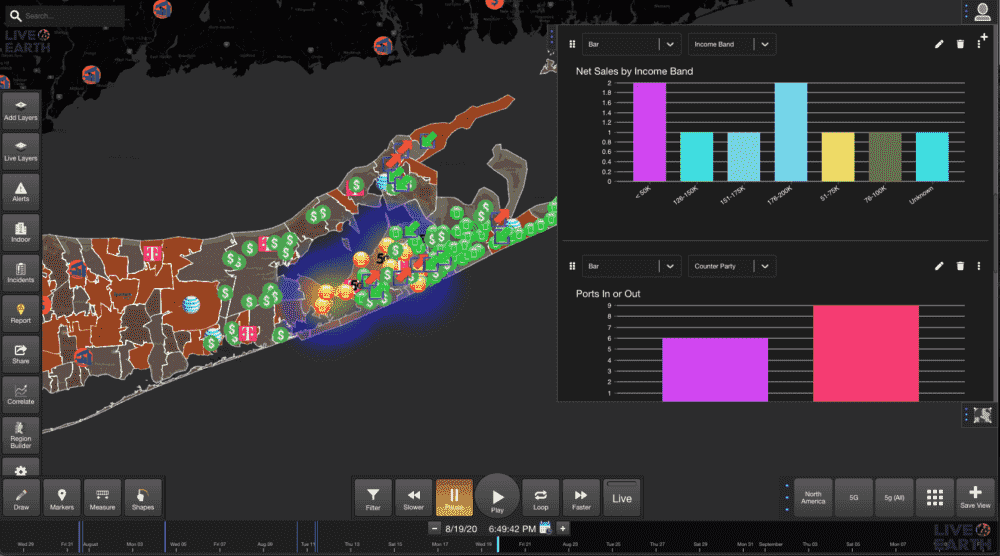In today’s competitive retail landscape, staying ahead of competition requires more than just selling products online or in-store. Retailers need to harness the power of real world data enrichment to gain valuable insights and make informed decisions. Gaining insights to help with decision-making can help drive their business forward. Here, we will explore why real world data enrichment is mandatory in the ever-evolving retail industry.
What is Real World Data Enrichment?
Firstly, let’s understand what real world data enrichment is. Real world data enrichment refers to the process of enhancing raw data with additional information from external sources. In retail, this can include data from customer interactions, point-of-sale (POS) systems, supply chain, social media, and more. By enriching raw data with external information, retailers can gain a deeper understanding of their customers, products, and market trends. Using external information to enrich data can lead to better decision-making and improved business outcomes. Data enrichment plays a crucial role in visualizing data.
How is Real World Data Enrichment Essential for Retailers?
Real world data enrichment is a must-have for retailers because it provides a more comprehensive view of customers. In today’s retail environment, customers interact with retailers through in-store visits, online purchases, mobile apps, and social media. Each of these interactions generates valuable data that can be used to understand customer behavior, preferences, and needs. However, this data is often fragmented and stored in different systems. Consequently, separated data makes it difficult for retailers to have a holistic view of their customers.
Analyzing Data from Various Sources
Real world data enrichment allows retailers to integrate and analyze data from various sources. Analyzing data this way creates a single customer profile that provides a 360-degree view of the customer. This comprehensive view enables retailers to gain insights into customer preferences, purchase history, browsing behavior, and more. With this information, retailers can create personalized experiences, tailor marketing campaigns, and offer relevant product recommendations. Making these changes leads to increased customer loyalty, higher customer retention rates, and improved customer satisfaction. These are some of the ways that visualizing historic data can improve a retailer’s understanding of their customer base.
Optimizing the Supply Chain and Inventory Management
Analyzing sales data enriched with external factors such as weather data or social media trends helps retailers identify patterns and correlations. Inventory management can then be informed to make necessary decisions. If a retailer notices that sales of umbrellas spike during rainy days, they can increase their stock to meet the increased demand. Similarly, if social media data indicates that a particular product is gaining popularity among influencers, retailers can quickly increase the inventory of the product. Inventory management uses the help of real world data enrichment to reduce stock-outs, minimize overstocks, and optimize supply chain operations. Leveraging data enrichment in this way ultimately leads to improved profitability and operational efficiency.
Gaining Insights When It Comes to Market Trends
Real world data enrichment is also crucial for retailers to gain insights into market trends and competitive intelligence. The retail landscape is constantly evolving, and retailers need to stay abreast of the latest market trends and competitor activities to remain competitive. Real world data enrichment can provide retailers with external data, such as industry reports, market research, social media sentiment analysis, and competitive pricing information, that can help them identify market opportunities and stay ahead of the competition.
Conclusion
For instance, by analyzing data on competitor pricing and promotions, a retailer can adjust their pricing strategy to remain competitive. By monitoring social media sentiment around their brand and products, retailers can gain insights into customer feedback and preferences, which can inform their product development and marketing strategies. These are some ways data platforms are changing the game for businesses. By leveraging real world data enrichment for market trend analysis and competitive intelligence, retailers can make data-driven decisions and stay ahead of the competition in a rapidly changing retail landscape. Navigating the use of real world data enrichment is the first step in helping companies prosper. For help in any of these areas, contact us today.

